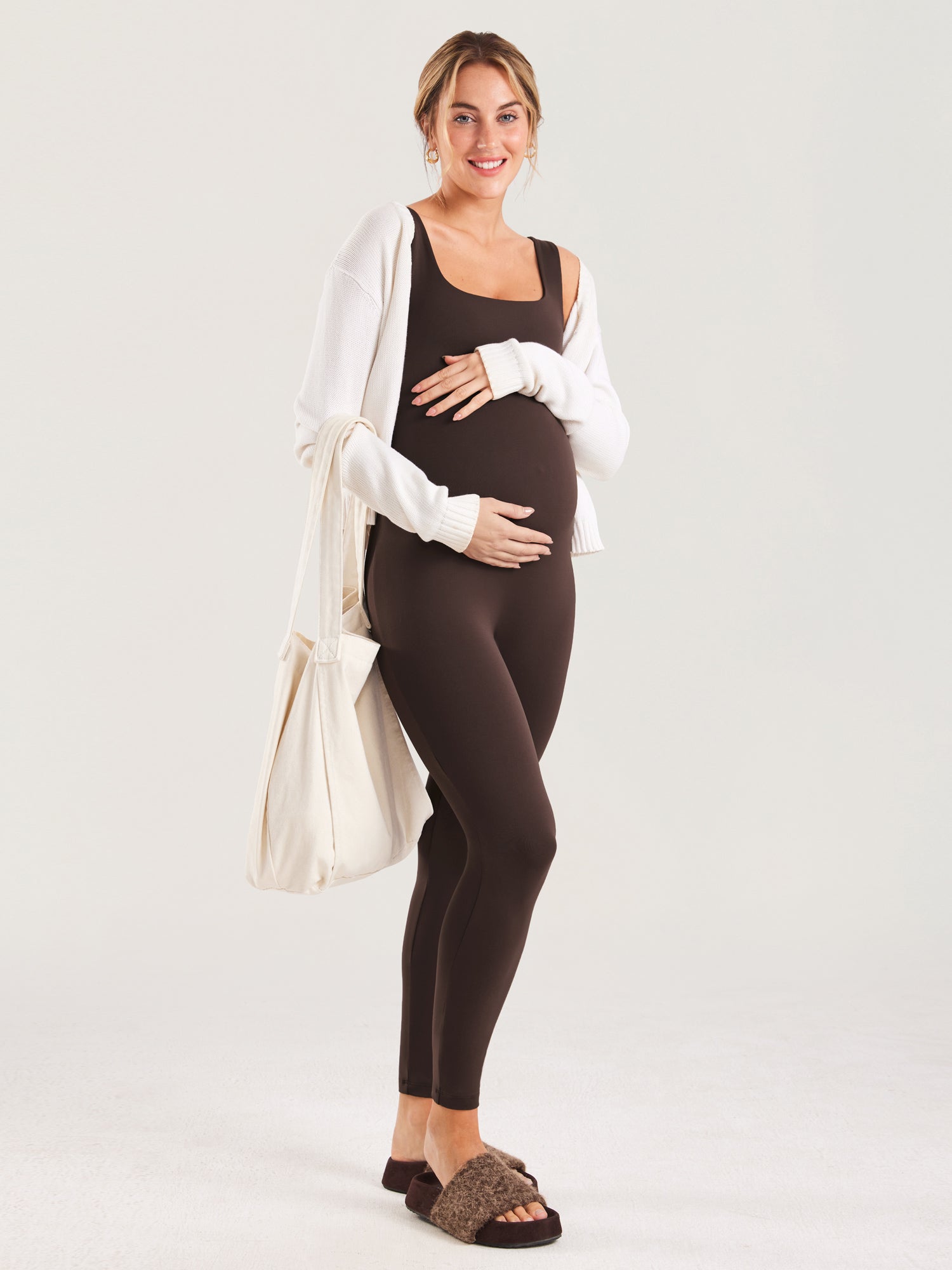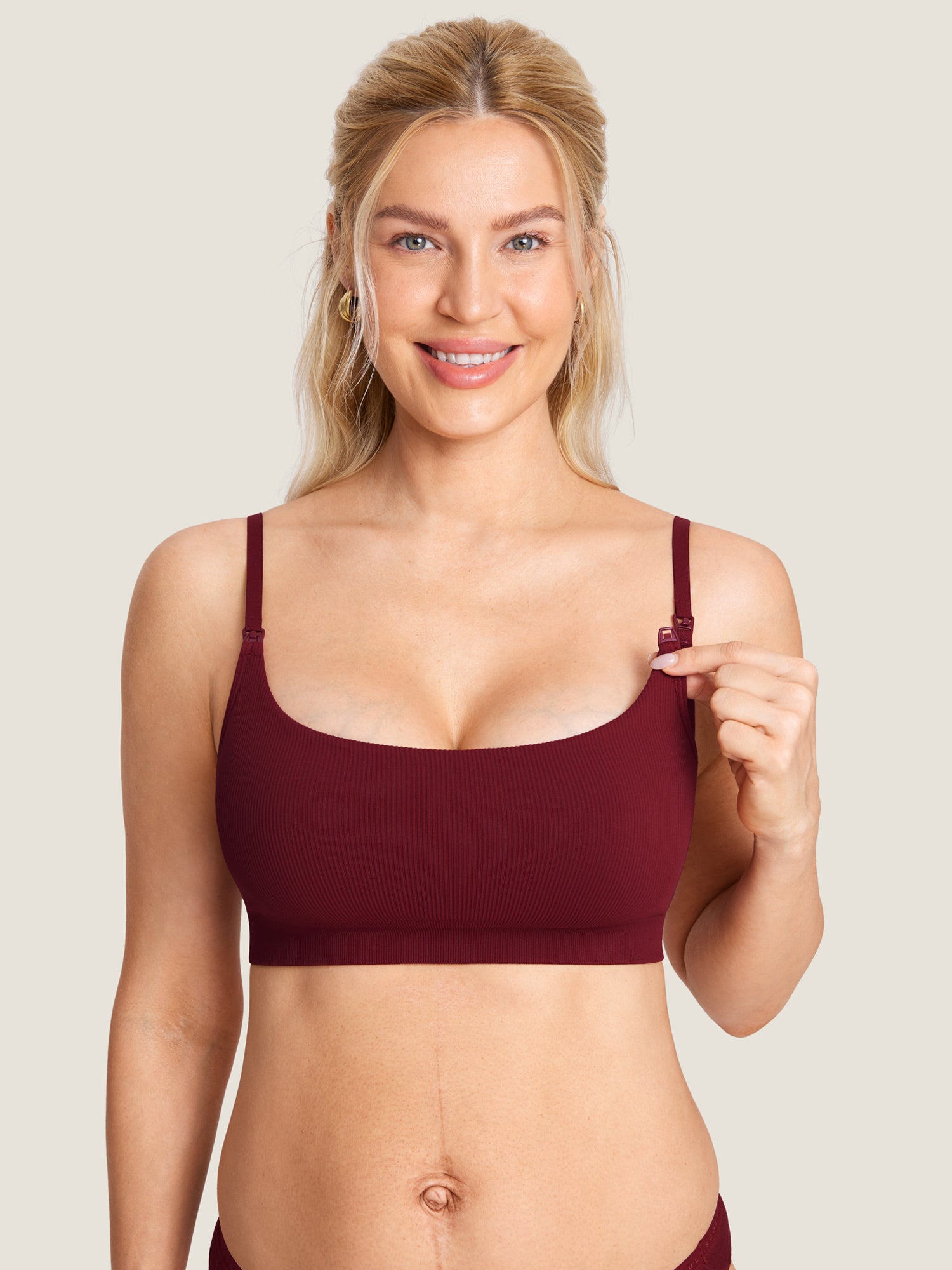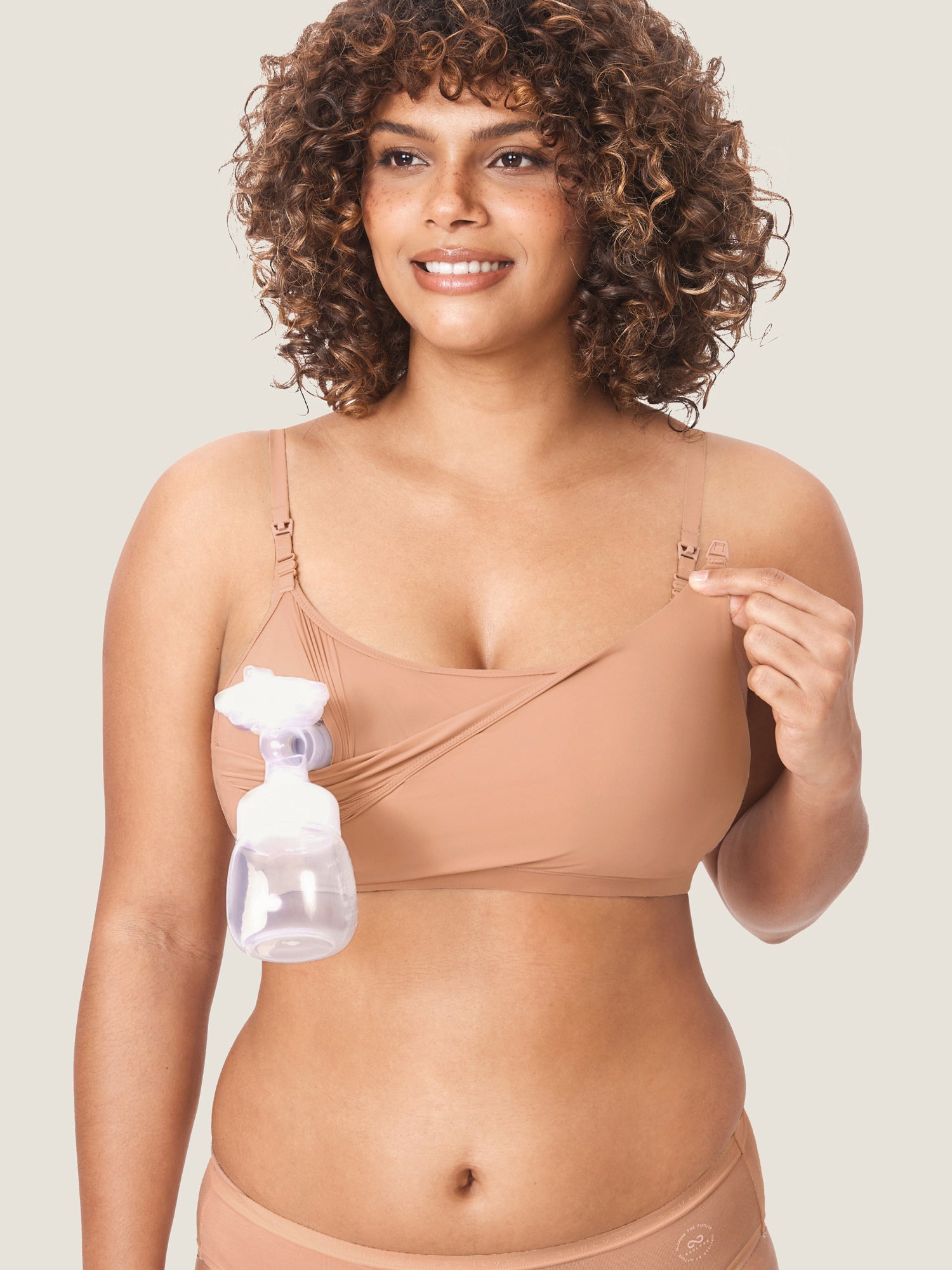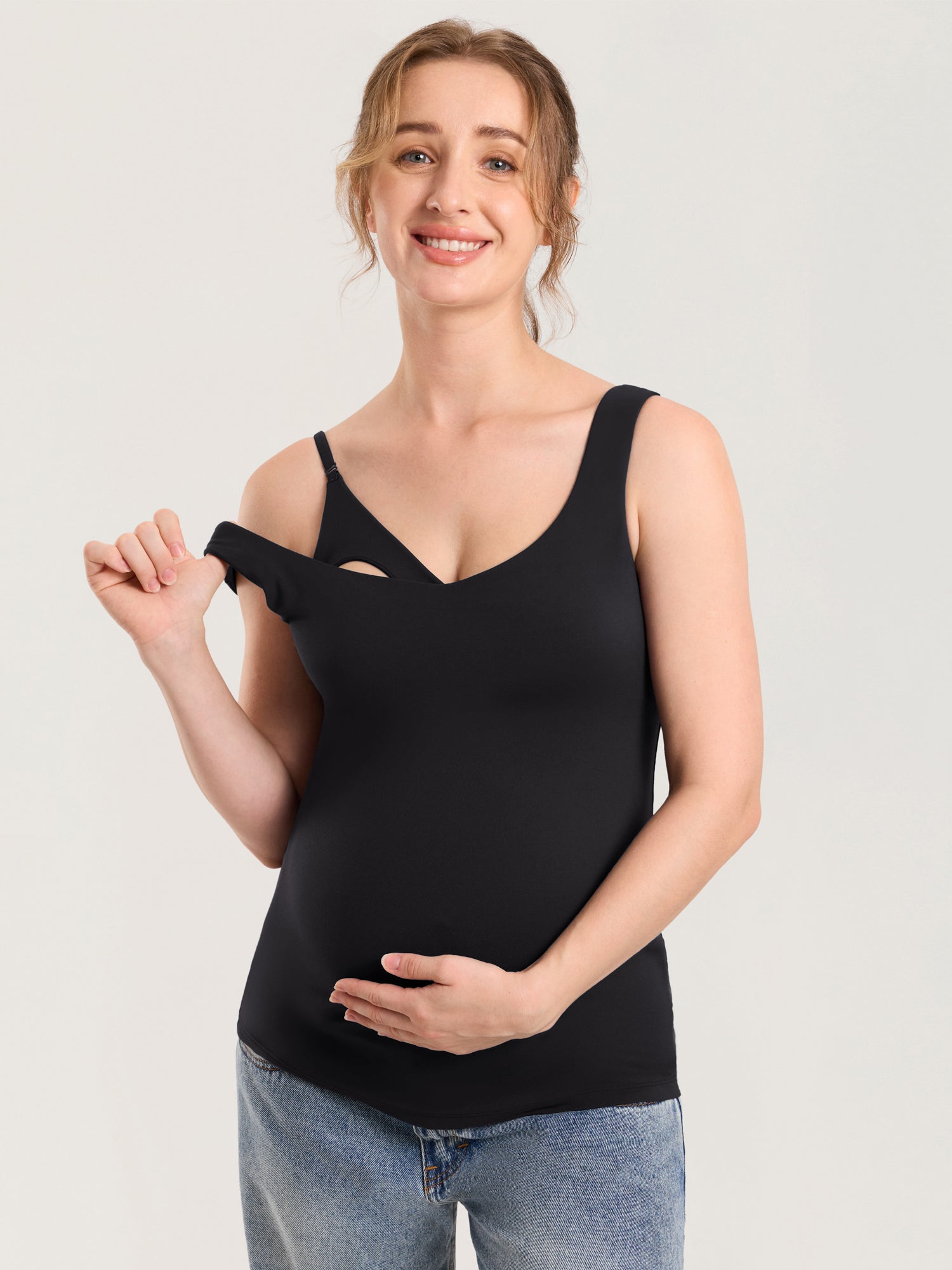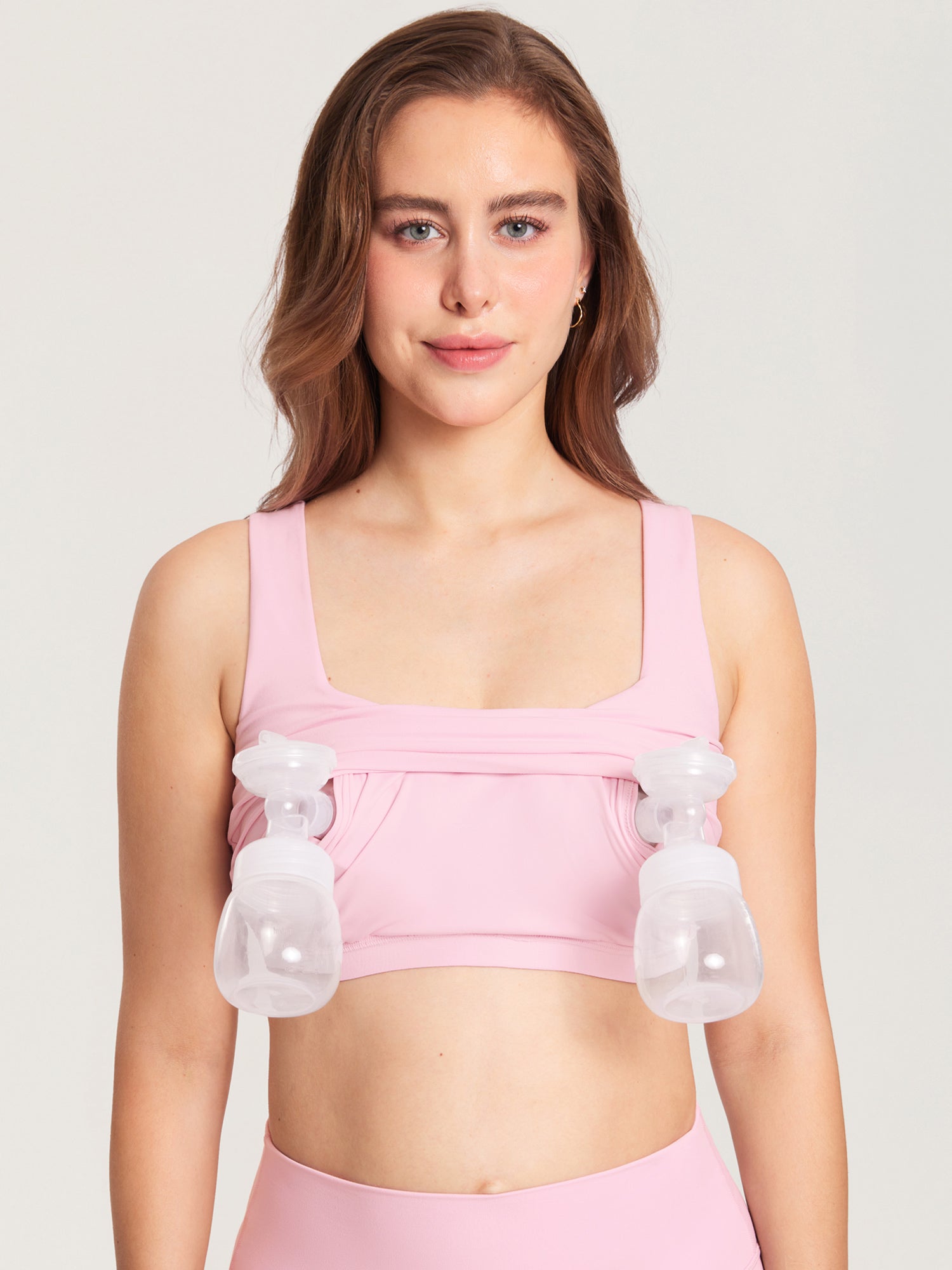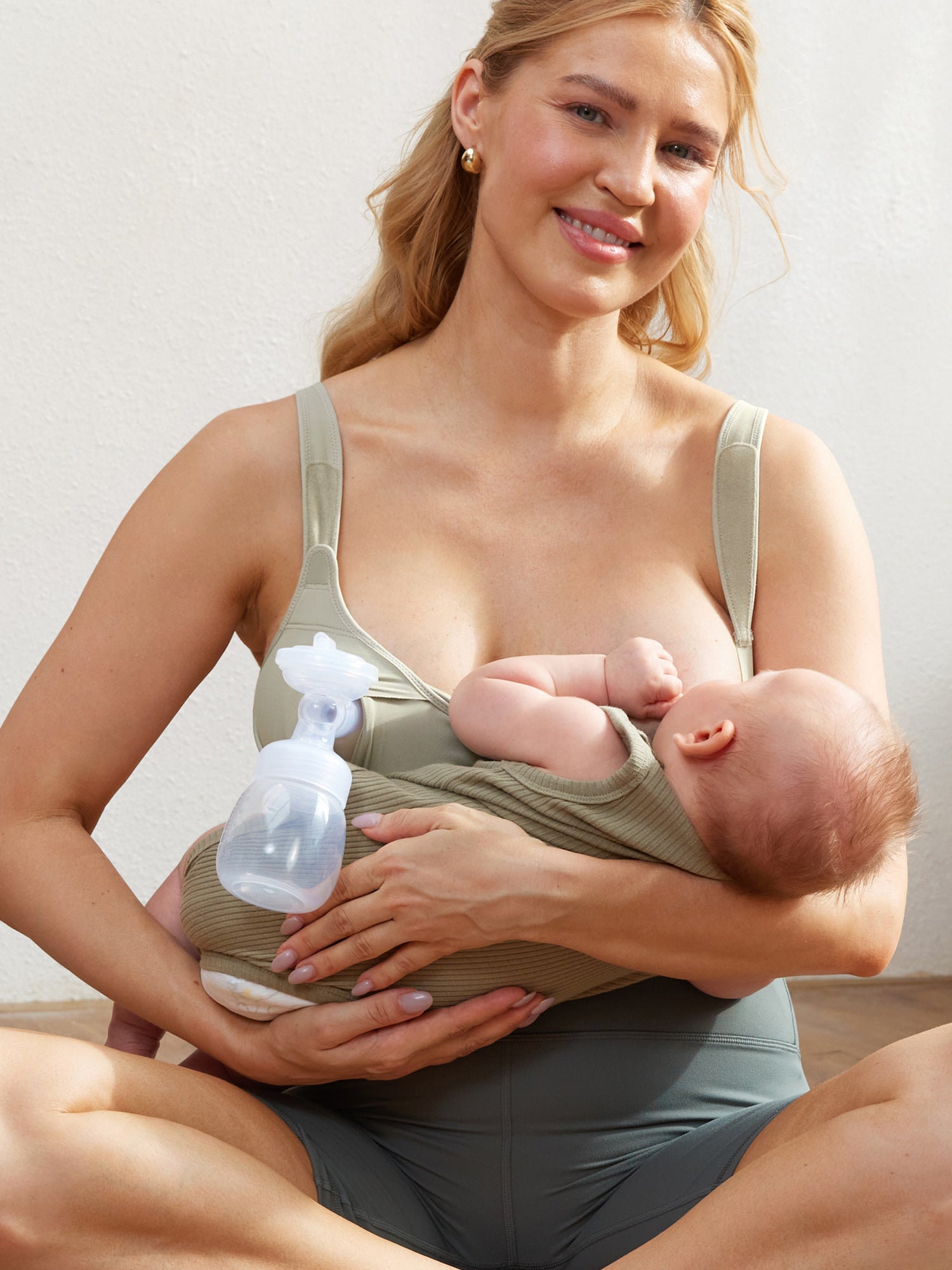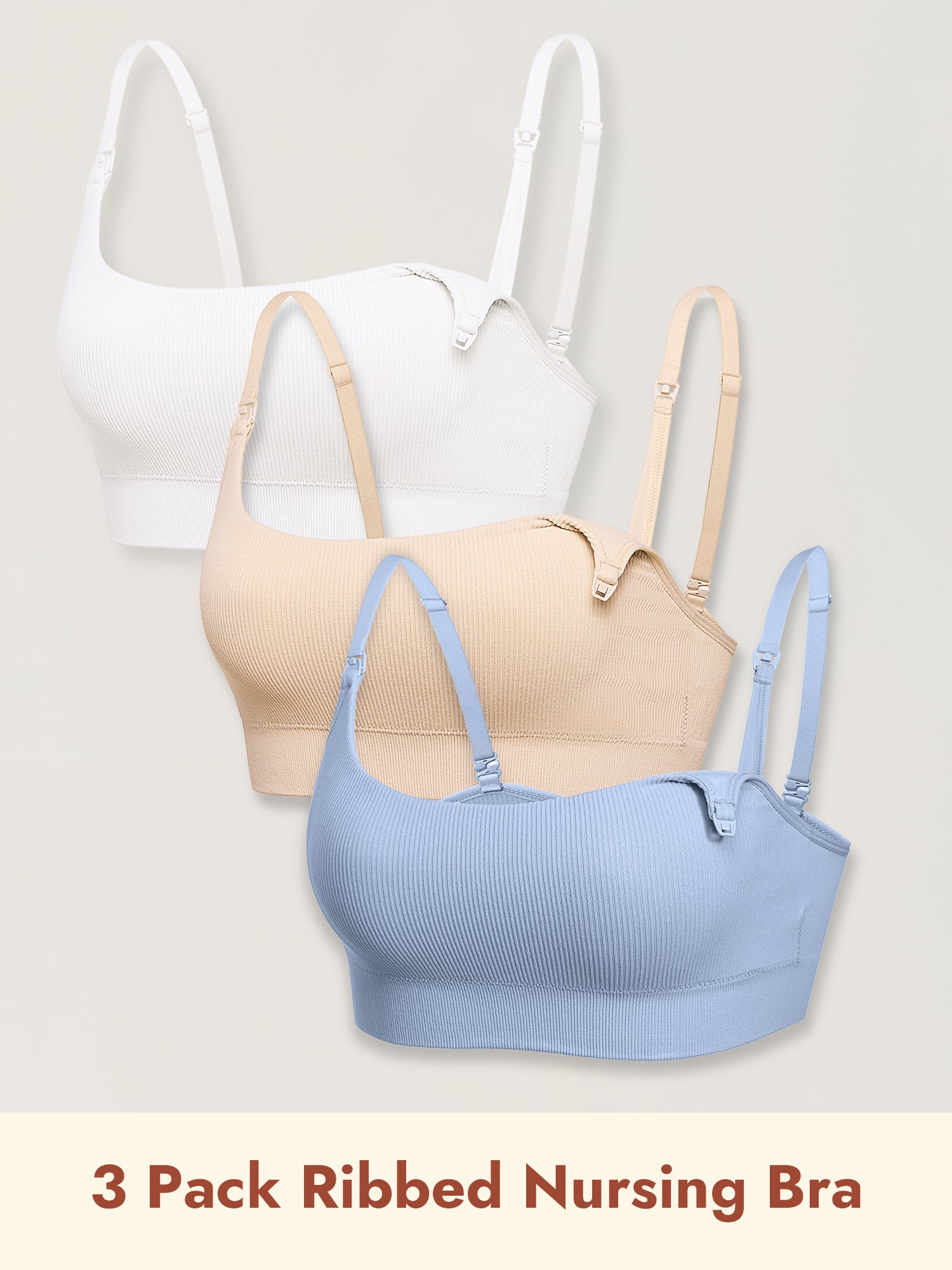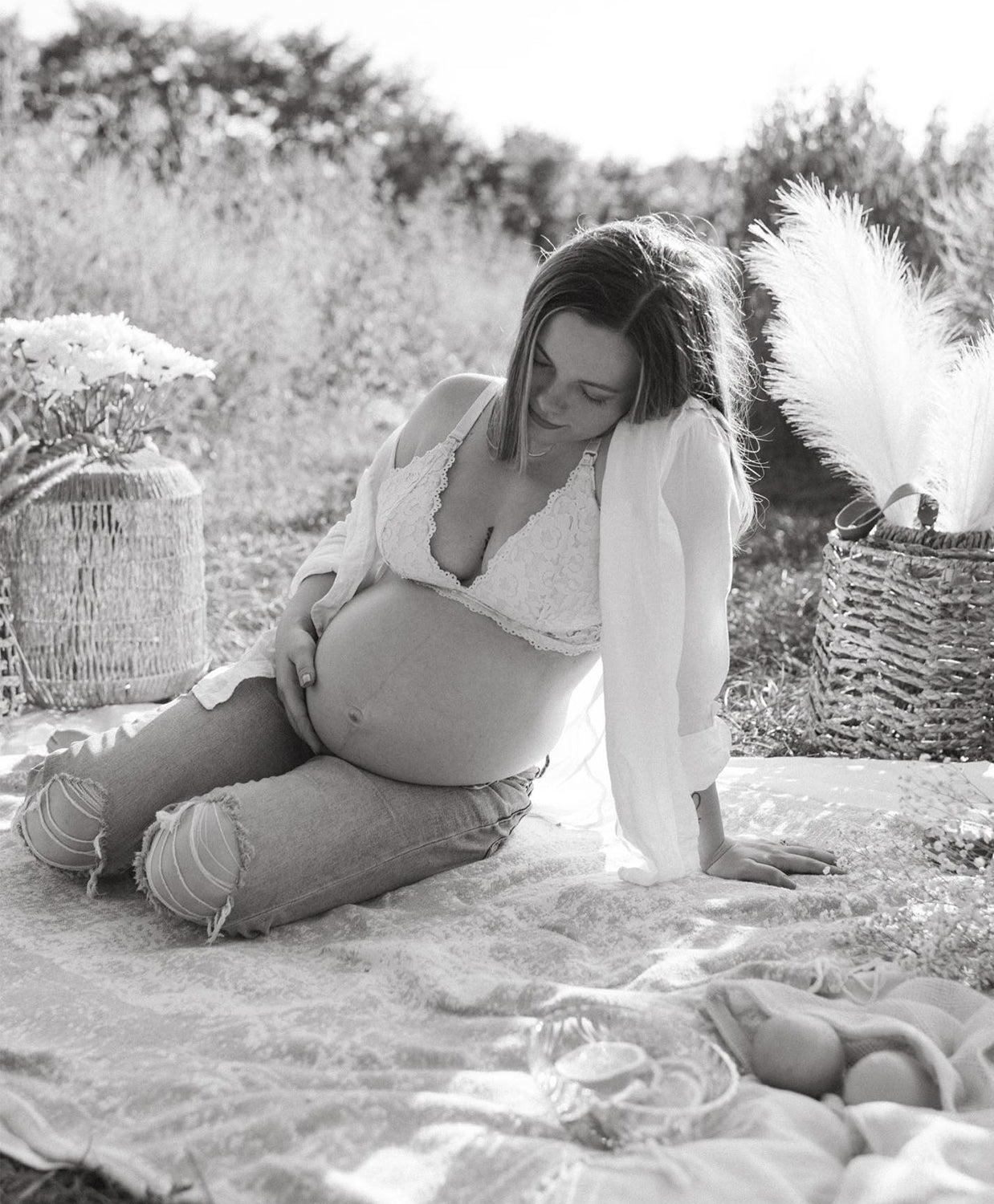15 Breastfeeding FAQs to help you get started

This guide is a collection of common breastfeeding questions and their answers. Hopefully, once you have all the answers, you will be better equipped to nurse your little one.
📌1. When should you start breastfeeding?
Start breastfeeding as soon as your baby is born, ideally within the first two hours after birth. If you had a c-section, your healthcare provider will help you position yourself comfortably so you can start breastfeeding as soon as you are settled in the recovery room.
📌2. What are the benefits of breastfeeding?
Breastfeeding has a lot of benefits for both you and your baby. Breast milk is the perfect food for newborns because it is loaded with nutrients and antibodies, allowing it to boost their immunity while nourishing them. Babies also bond with their mothers through breastfeeding. Furthermore, breastfeeding reduces the risk of allergies and health conditions such as obesity, diabetes, ear infections, Crohn’s disease, and childhood cancers like lymphomas later in life.
For moms, breastfeeding is a convenient, cost-effective way of nourishing their little ones that also helps reduce postnatal bleeding while delaying the onset of menstruation. It also reduces the risk of developing postpartum depression as well as health conditions like breast and ovarian cancers. All while helping them shed any extra baby weight faster.
For more information, check out our guide to breastfeeding benefits.
📌3. What are the best breastfeeding positions for babies?
The best breastfeeding position for you and your little one is the one that is the most comfortable for both of you. There are different breastfeeding holds to choose from, including:
- The cradle hold: lay your baby horizontally across your body. Turn her body slightly inward towards you. Offer her your breast to latch on.
- The laidback hold: recline on a comfortable chair or your bed. Have your baby lie vertically on your torso, with her mouth within reach of your breast. Guide her to help her latch.
- The football hold: this is an excellent hold for moms who are recovering from a c-section. In it, you hold your baby directly beside you instead of in front of you. She should be tucked comfortably under your armpit with her head towards your breast so she can latch.
- Laying side by side: for this one, all you have to do is lie beside your baby so you are parallel to one another. Lay on your side facing your baby and position her so she can access your breast.
For more information about this and more examples of breastfeeding holds for younger and older babies, check out our guide to the best breastfeeding positions.
📌4. What is colostrum?
Colostrum is the rich, thick, yellow-orange breast milk that your breasts will produce in the first few days after giving birth. Colostrum is packed with all the nutrients and antibodies your baby needs to thrive during those first few days. After the first week, your breast milk will change into transitional milk, which is a mix of colostrum and mature milk. From week two onwards, your breast milk will become mature milk, which is plain white.
📌5. When will my milk come in?
As mentioned earlier, your body will make colostrum for the first few days after birth. After about 5 days of colostrum, your breasts will start to feel firmer. This is a sign that your milk supply is increasing and your breast milk is turning into mature milk.
If your milk takes longer than this to come in, don’t worry. This is completely normal because the period varies between women. However, if you are concerned, let your doctor know. Try to breastfeed often to stimulate your milk production.
📌6. How do you know if your baby is getting enough milk when you breastfeed?
If your baby is latching properly and feeding regularly (every two to three hours), she is probably getting enough milk when she breastfeeds. If you are concerned, check that your baby is gaining weight steadily, having 6-8 wet diapers a day, and has regular bowel movements. If she checks all these boxes, she is doing just fine. When in doubt, consult your pediatrician.
📌7. What are some of the important breastfeeding essentials that you need?
Breastfeeding is great because it can be done without having to buy any supplies. That said, a few supplies that will make your life easier include a good nursing bra. For a complete list of all the breastfeeding essentials you need, check out our ultimate guide to breastfeeding essentials.
📌8. Can you pump if you are breastfeeding?
Yes, you can pump even as a breastfeeding mom. Just like breastfeeding, pumping is a personal choice. A lot of breastfeeding moms also pump. You can do it once in a while to ease engorgement or to have another caregiver give your baby the bottle. You can also do it regularly while still breastfeeding your baby, or choose to pump exclusively. It’s entirely up to you.
📌9. What should I eat for breastfeeding?
Your diet is super important as a breastfeeding mom. Check out our detailed guide on what to eat and what foods to avoid during breastfeeding. The gist of it is that you should ensure you eat a balanced diet for every meal. Your diet should include some protein, fruits, veggies, whole grains, healthy fats, and calcium-rich foods like dairy and tofu. And don’t forget to hydrate!
📌10. How do I know if my baby is latching correctly?
Latching is how your baby takes your breast into her mouth. Your baby is latching correctly if your entire nipple and part of your areola are in her mouth. Her lips should also be turned outwards and her chin and nose should be lightly touching your breast.
📌11. How long should my baby nurse?
When it comes to how long your baby should nurse, it is best to let her decide. Every baby will have a different number of feedings based on their needs. There’s no need to force your baby into a particular schedule; this can only lead to lots of resistance from her, which can cause poor weight gain and reduced milk supply.
Let your baby feed until she unlatches on her own. This self-detachment increases the amount of high-fat milk she’s getting.
If your baby sucks non-stop, she may self-detach after about 10 minutes. Other babies may take up to 30 minutes to empty one breast. A baby will usually breastfeed for a short time at the second breast, or she may not want it at all. For this reason, try to switch between which breast you offer first for every feeding session.
📌12. How long should my baby nurse?
While pumping and formula feeding are great, breastfeeding is far superior for several reasons. It is a free method of nourishing your little one that requires no clean-up and can be accessed at any time. It is also the best way to bond with your baby. Plus, your breast milk contains antibodies that are specially tuned to cater to your little one’s needs. It also improves your little one’s immunity to illnesses and diseases.
📌13. What are some common breastfeeding challenges?
Here is a list of some of the common breastfeeding challenges:
- Cracked nipples
- Engorgement
- Low milk supply
- Milk storage
- Leaking breasts
For more information, read our compilation of some of the top struggles and solutions for breastfeeding moms.
📌14. How can you prepare for breastfeeding before your baby is born?
There are several things you can do to make breastfeeding a little easier for you once your baby gets here:
- Take breastfeeding classes. These will teach you all the basics you need to know
- Get quality prenatal care to closely monitor your pregnancy and reduce the risk of premature birth
- Talk with your doctor about your plan to breastfeed so that they can prescribe you safe supplements, medication, and birth control
- Join a breastfeeding support group where you can get support, guidance, and answers to any questions you might have about breastfeeding
- Stock up on all the important breastfeeding essentials you need
📌15. I’m having a really hard time breastfeeding. What do I do?
Breastfeeding is a skill that both you and your little one have to learn. Sometimes, it can be quite a challenge. Luckily, there are several things you can do.
While still at the hospital, ask for help from the nursing staff, the lactation consultant, your pediatrician, or your OB-GYN. Once you leave, schedule an appointment with your pediatrician within 24-48 hours so that they can check your baby’s weight and feeding techniques. If you are having any problems before then, give your doctor a call.
The most important thing to keep in mind about breastfeeding is that it gets easier with time. Don’t let it get you down. Have patience and take advantage of all the practice you are getting with your baby.
Final Thoughts
This covers all the essential breastfeeding information you need to know before you can start nursing your little one. For more information, read our breastfeeding care instructions for new moms. And above all else, do not be afraid to get help when needed. If you are having a tough time adjusting to breastfeeding, reach out to your healthcare provider.
SUBCRIBE FOR NEWSLETTER
Shop today with 5% OFF your first order of all products storewide

